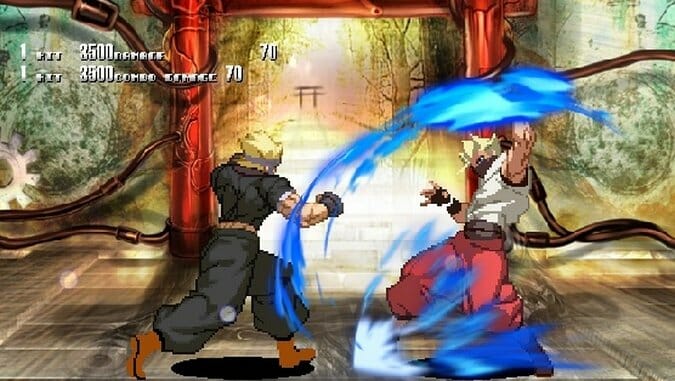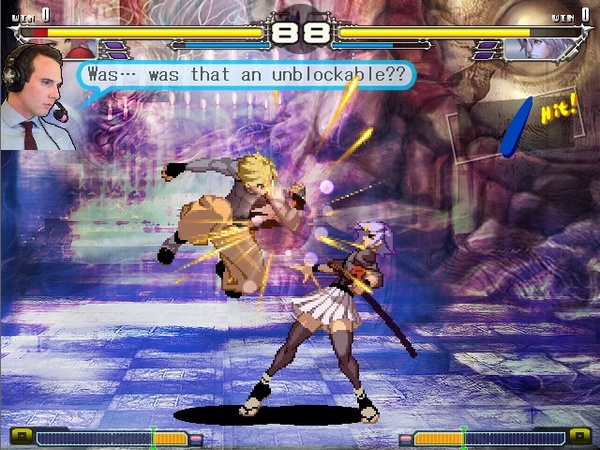Yatagarasu Attack on Cataclysm: Parry King

Full Disclosure: The reviewer backed the game’s Indiegogo Campaign at the $10 level, which provided him with an alpha, beta and pre-release version of the game.
The parry is one of fighting games’ greatest treasures. It’s responsible for the most memorable moment in the fighting game community, EVO Moment #37, which crossed into the online mainstream at a time when fighting games were more than a decade removed from their Street Fighter II tipping point and four years ahead of the Street Fighter IV revival. Parries, as the Moment #37 demonstrates, are the biggest payoff for mastering a fighter’s hyper speed chess game; a full parry like the one Daigo Umehara performed against Justin Wong sends a powerful, unambiguous message: “I got you.” It’s exactly what you want when playing a game about reading your opponent’s moves and reacting to them.
Yatagarasu Attack on Cataclysm isn’t the first game to chase the spectacle of the parry. Capcom’s been chasing it ever since Street Fighter III: one of the Grooves in Capcom vs. SNK 2 allowed you to parry; the trailer for Ultimate Marvel Vs. Capcom 3’s “Heroes and Heralds” mode ended with a recreation of Moment #37. Street Fighter IV’s Focus Attack is a pseudo-parry. In Street Fighter V, Ryu’s defining trait is his ability to parry. So Yatagarasu follows a long lineage of games attempting to capture that EVO magic.
But Yatagarasu is the first game to chase the parry as part of a more dedicated homage to Street Fighter III. Of the game’s six buttons, two are reserved for high and low parries (in Street Fighter III, you parried by pressing forward instead of blocking). The game has red parries. If you get caught in an opponent’s combo, you can perform a sort of quasi-parry by pressing the corresponding punch or kick button of every move hitting you, reducing its damage 5%. It both mitigates and doubles down on the risk of parries: You can mash parry buttons while blocking, since you use buttons to parry, but if you press the wrong one, you take more damage and open yourself up to longer combos than if you hadn’t done anything.
It’s an interesting risk-reward balance that speeds up an already fast game. Yatagarasu ends up playing like Street Fighter III with SNK alumni; parries, universal overheads and multiple supers per character mix with high jumps and the wilder side of Samurai Showdown’s aesthetic. The sprites and backgrounds are also steeped in Street Fighter III’s beautiful sprite work. You won’t have to worry about fighting games’ modern comeback mechanics or slowing rate, but you won’t get much in the way of new systems, either.
Combos, too, veer closer to Street Fighter III’s bursts of damage than Guilty Gear or Marvel’s page-long strings of basic attacks, special moves and supers. It’s a game oriented around quick exchanges during the neutral game (the period of time when players trade jabs at a distance, hoping to catch one another in a string). The end result means you have plenty of chances to recover from a bad exchange, but each of these minor exchanges happen so quickly and build on one another in such a way that a great player will decimate a novice on the high-low guessing game alone.
What anyone chasing the parry tends to forget is that it is rarely the glorious, hype-inducing spectacle videos like Moment #37 make it out to be. Sure, the potential’s there, but most of the time, a parry lasts less than a second, and you’ll most often see them catching fireballs thrown from a screen away, or punishing an overzealous player caught off guard, resulting in a quick reversal of fortune that, again, doesn’t last too long. Parrying is powerful, potentially game-changing. But it isn’t “Let’s go Justin!” followed by a mind-blowing, once-in-a-lifetime moment. It’s much more subtle and less bombastic than we’ve given it credit for. It’s a single pop amidst the noise of pows and super moves.
